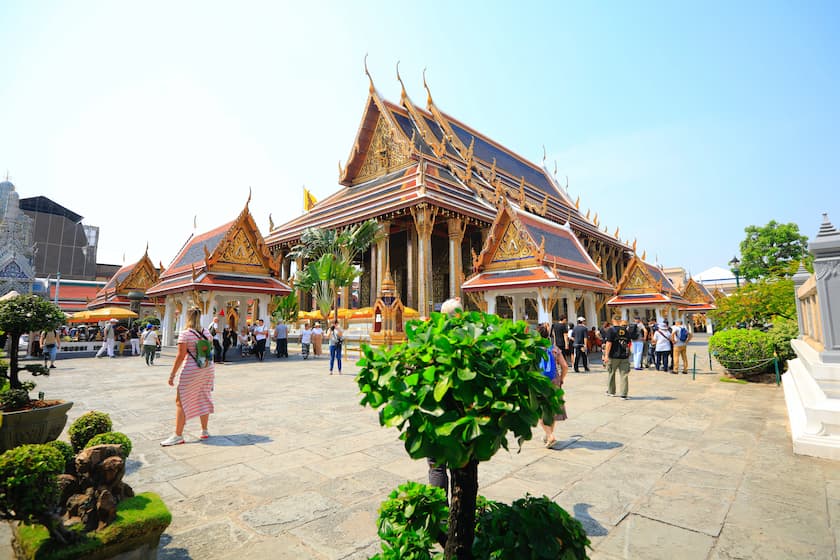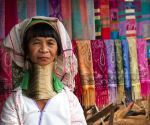Historical Thai Houses in Bangkok
One of the many joys of learning about Thai culture are the varied types of houses and other structures that can be seen all over Thailand and Bangkok. Thailand is an amazingly lovely country with a warm and inviting population. If you are making plans to visit this ancient land, you'll want to make an exploration of the region's architectural style a major part of your trip. There lots of places that let you see how the region's architectural style has evolved over time. Historical Thai houses in Bangkok allow you to see some of the most beautiful spaces in the entire world and how they come together in harmony when you enter inside. This an an ideal way to gain an understanding of this unique region. It's also a great way to have lots of fun and interact with residents as they teach you about their impressive country and culture.

Chiang Mai's Historical Buildings
Mr Kukrit Pramoj House
Located in South Sathon Road in the hear of downtown Bangkok, Mr Kukrit Pramoj House one house that is not to be missed. This is one is dedicated to the memory of Prime Minister of Thailand Kukrit Pramoj and what he accomplished for Thai society. It's a haven in the middle of a bustling metropolis. Five teak houses form the base of house. They blend together to create an inviting space that welcomes all visitors. Make the reception hall your first stop. Here, you'll see a display of masks. The highly decorated masks are designed for dancers who engage in what is known as the traditional Thai Khon dance that have been performed here. You'll want to make time to visit the lush outdoor gardens. Each one has lots of inviting space where you admire the careful ways in which it is integrated with the surrounding area.
Jim Thompson House Museum
This museum is all about the life and work of American Jim Thompson. Thompson made his home in Bangkok in the middle of the nineteen fifties. During his time in Bangkok, he amassed a huge collection of local art. As he collected many items, he realized it would be necessary to find a place to live and house them. The result is the Jim Thompson House Museum. This is one place where the mix of his private quarters and his respect for traditional Thai culture merge. The museum shows off many important artefacts and other items he collected while in residence. In addition to Thai art, there are also items from other parts of southeast Asia. It's a delightful structure that offers a respite from the heat. Take the time to savour how it is fully integrated with the surrounding landscape.
Kamthieng House Museum
Kamthieng House Museum offers visitors a glimpse of a traditional teak farmhouse. Visitors are stunned to find this oasis right next to an incredibly busy street. If you don't have time to head to the countryside, this is the perfect place to let the countryside come to you. You'll want to set aside at least an hour to get a full grasp of the space. The museum is all about Thai life as it was lived for much of history. Learn about how rice was harvested at the rice granary. Examine tools that are still in use in many parts of the country. Bring your camera to get a close up of some of the best preserved art. Kids can sit back and watch an animated film that takes the point of view of a lizard as he explores the interior. This one of the most memorable of all historical Thai houses.
The Grand Place
Of all the many places you'll want to put on your list of places to visit, the Grand Place should be at the top. That's because this is where the kings and queens of Thailand live. Dating back over two centuries, the Grand Palace is one of the most important buildings in the country. What was once a fairly modest structure has evolved into a huge complex of many buildings. Allow at least a half day to get a chance to appreciate the full scope of what you're seeing. Guided tours can help you make sense of the building's history and many varied uses. This is a working complex. Important state and religious ceremonies are still held here several times a year. That means you get direct insights into how Thai life is lived at the very highest levels today.
Wat Phra Chetuphon
Wat Phra Chetuphon consists of a series of buildings that make up a Buddhist temple complex. This is one is set on Rattanakosin Island. It's just south of the Grand Palace so you can visit both in a single, easy trip. The complex dates back to the early part of ancient Thai history. Admire the subtle colours that go into the creation of this site and the temples that dot the landscaping. This is where you'll find the largest collection of Buddha images in the entire country. Take the time to appreciate and admire the world of many dedicated artists over the years. There are dozens of sculptures. Cool marble helps keep out the heat. You'll want to allow yourself enough time to relax and let the experience unfold. This is one way to understand what the culture of Thailand is all about.
Temple of the Emerald Buddha or Wat Phra Si Rattana Satsadaram (Wat Phra Kaew)
The Temple of the Emerald Buddha is one of the most famous sites in Thailand. This is the single most most sacred Buddhist temple in the entire country. As such, be prepared to show your own respect by taking the time to visit it. In the heart of the house lies the Emerald Buddha. Construction of the site back in the late seventeen hundreds. Since that time, many additions have been added by successive kings. This is one place that still plays an important role in the region's culture. You're likely to see at least state function being carried out when you visit. It's a great place to get to know locals who come here to practice their religion. Take a guided tour to learn more about the history and culture of the structure.
Kudi Chin
Kudi Chin is one of the oldest of all Roman Catholic churches in Bangkok. This is one way to get a feel for the kind of communities that have helped shape modern Bangkok into the community it remains today. Built by Portuguese immigrants in 1771, the church is full of the kind of incredible details that make it worth a stop. Head for the Thon Buri District. It's adjacent to the Chao Phraya River. You'll want to have a look at the ornate exterior and then spend some time inside. During the day, this is a lively space. Come here at night. The space lights up with lots of colour visible from many other parts of Bangkok. It's one space that lets you appreciate how many cultures have contributed to the growth of a diverse culture in the area over a long period of time.
Spirit Houses
Spirit houses can be found all throughout Bangkok. These are tiny houses that play an important role in the local culture. There are typically many such houses in any given area. That makes them easy to spot. These little structures are intended to serve as a way of respecting the figures in Thai religion. Many locals will take the time to give such houses a small wave of respect on their way to somewhere else. They might also also bring offerings intended to provide something for the gods. This is one way to get to better know the area's culture for yourself. You can take photographs if you like but be careful to observe the rules that require a certain level of respect in the process. Note the differences in each house. That is what makes them so remarkably interesting to examine up close.
Suan Pakkad Palace Museum
The Suan Pakkad Palace Museum is one of the best places to get know the area's culture in greater depth. This charming museum has many items on display. You'll find items like pottery that date back over four thousand years. The name of the museum actually means cabbage patch. It's a fitting name for a museum located in the middle of what is a large garden of a sort. Explores the beautiful grounds after you're done viewing items inside. Make time for Lacquer Pavilion. This one building is actually over four hundred years old. It's a cool space where you can get away when it gets hot outside. You can also see a grouping of four houses that have a covered walkway that connects them to a central space. That is a good way to understand exactly how life was lived here for many centuries.
Related Articles
- Exploring Bangkok's Old Buildings
- Haw Many Days To Spend in Bangkok
- Things To See & Do In Thonglor Bangkok
- Exploring Bangkok's Temples
- Chao Phraya Sky Park in Bangkok
Others Blog
Latest Post
The Karen Hill Tribes of Chiang Mai
22/04/24Extend Your Stay in Chiang Mai
01/04/24



